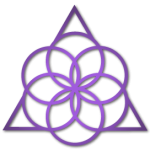The Bowspring returns us back to the natural curves in our alignment and away from our flat, heavy C-curve modern posture. It is a revolution away from our comfortable, sedentary lifestyle, which is mostly spent sitting in relaxed posture working at our desks, watching a screen, and talking on our phones. We have gotten out of attunement with our natural dynamic posture. Our modern misaligned form isn’t just taking a toll on our physical health; it desensitizes us and diminishes our capacity for feeling and thinking clearly. The Bowspring is a wave in a cultural revolution that is returning us back to embodying a naturally curvy posture in which we have greater capacity for vibrant health.
A July magazine article in Runner’s World entitled, “Sitting is the New Smoking – Even for Runners”, presented the latest findings that indicate regular exercise each day may not be enough to counter the harmful health effects of sitting 9+ hours a day. With a large percentage of Americans sitting at their desk, in their car, and on the couch for 9 – 10 hours a day, this is worrisome news for the health of our modern society. Until recently, the general game plan to try to stay in decent physical shape for the working masses, who are sitting more than ever, has been to go to the gym after work, go for a daily bike ride or a walk, or be very active outdoors on the weekends. Unfortunately, new research is finding that even this amount of exercise, an average of 150 minutes a week, is not reversing the deleterious effects of so much daily sitting. Hours of inactivity each day is correlated to increased risks of heart disease, diabetes, cancer, and even depression, and a basic exercise regime is evidently not helping to improve this health trend.
One of the factors in this research that was not mentioned is postural alignment and its impact on the sitter’s overall health. The vast majority of people today sit in their office chair, car seat, or couch with their lower back rounded backward, their pelvic floor tucked under, shoulders rolled forward, and neck flat with head tipped downward toward their screen or office task. With all the posterior muscles on the back of the body relaxed and the front of the body shortening, the spine is more like the shape of a C than an S. This rounded form of the torso is initially calming to the nervous system, so it is immediately perceived as a comfortable posture by the sitter. The more relaxed the sitter becomes in this comfortable position, then the laxity of the back muscles increases, and the posture becomes even more of a C-shape. The posterior tip of the pelvis while sitting disengages the gluteal muscles, which atrophy overtime from this poor postural alignment. In turn, the hip-flexors, particularly the psoas shortens and tightens, contributing to significant misalignment in the hips and lower back.
Not only does poor sitting posture lead to musculo-skeletal pain in the hips and the lower back, the deeper negative effects could be felt at a cellular level. In her new book, Secrets of Your Cells, Sondra Barrett presents a current scientific idea that the vibratory tone of the extracellular matrix, which surrounds each cell of the body, transfers signals to the nucleus of the cell via its cytoskeleton, affecting its growth and health. Therefore, if the fascia of the body is chronically misaligned, then cells throughout the body could be receiving signals which lead to disease. According to Barrett, “scientists are beginning to discover that some cancer cells are more rigid than normal, healthy cells, and that rigidity or stiffening triggers disorganization away from normal cell growth.” It is further shown in Secrets of Your Cells that the tension of the body-mind at a cellular level is being informed by the tonus of the outer fascia, musculature, and extracellular matrix. Too much tension or not enough tone in the outer form of the body will translate to misalignment at a cellular level.
Balanced tone in the connective tissue of the body can occur with good posture. When sitting tip your pelvis forward so that the pelvic floor is level and the lumbar curve is lordotic all the way through T-12. This properly sets all the lower back muscles (erectors, QL, multifidus) in a lordotic curve which lays in alignment with the lumbar vertebrae and T-12. The anterior tip of the pelvis to this degree allows for optimal engagement of gluteus maximus, which mounds upward in contraction from the bottom to the top rim of the pelvis. Once the bow shape is created in the back and the musculature can be gently engaged, and the pelvis is held steady while the torso lengthens upward. This provides for a bow-spring effect, which gives maximum length, lightness, and strength to the entire torso and spine. Furthermore, good alignment of the spine can give a harmonious tone throughout the fascia, which in turn sends positive signals to the core of our cells.
When the following 3 steps of Bowspring alignment are performed in order:
- establish the bow shape to T-12 with a radiant heart,
- engage the muscles of the back of the body to the top of the glutes,
- and then extend the bowspring with this balanced tone from roots to wings,
then this aligned posture can positively affect all levels of the body-mind matrix.
Into the 21st century we are probably all going to continue to sit many hours a day, so what if we could actually use each hour sitting as a life practice which helps bring us greater health?! Sitting with good alignment is a practice, in which we can all become more skillful, and thereby enhancing our blessed lives. With a new view you can turn the problem into the solution.

